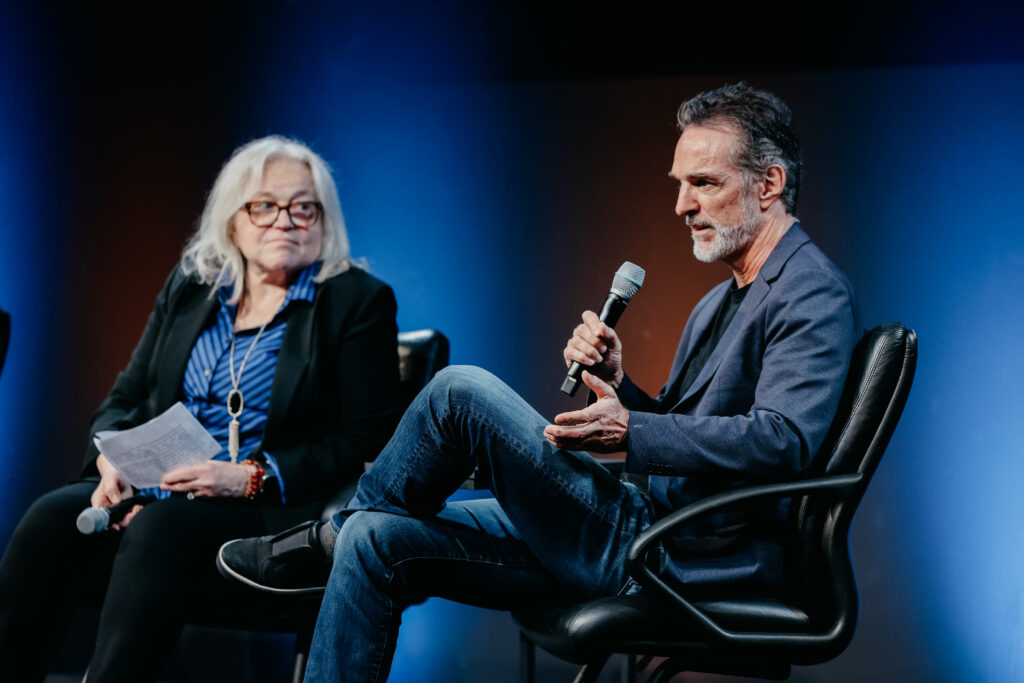By Chris Forrester

Tom Mueller, CEO/Founder Impulse Space. Mr Mueller was Employee No. 1 at SpaceX, and is an aerospace engineer and rocket engine designer. His work on the Merlin engine, which still powers SpaceX’s rockets, is hugely important to SpaceX. He founded Impulse Space having retired from SpaceX in 2020. Today his team is working on rocket engines as well as ‘space tugs’ for rescuing and moving satellites while in orbit.
Randy Segal, Partner, Hogan Lovells spoke to Mr Mueller in a ‘Fireside Chat’ at the Smallsat Symposium in Mountain View on February 5. She said this task was “without doubt the best role for anyone at the conference, and it was an honor to meet and talk to Tom”.
Mr Mueller said he met with Elon Musk in January 2002. “We had a couple of meetings and I joined him on May 1st that year. It wasn’t until later that I realized that because I had signed first to join him that I was Employee No 1, at least on the payroll, (where Elon is No 3, he said).”
Mueller told a few stories, including one in 2008 when a marketing lady (“Diane”) visited and we took her to watch an engine test. She didn’t think it was very loud when compared to a rock concert she had attended the previous week. “So we took her closer – about 100 yards away from the engine – which could develop 100,000 lbs of thrust. We were in a Hummer, and she ended up hiding behind the seat screaming, and the burn lasted 2.5 minutes, so she was being tortured with the noise.”
“Starting Impulse, where again I was employee No 1, is exciting, scary and fun. At first it was very scary, but now we are flying our second spacecraft (Leo Express-2) and we have contracts with SpaceX. But I had a lot to learn as a CEO. I left SpaceX in November 2020. It was the first year of Covid so things were fairly slow. I was bored so started designing what is now a 200 lbs engine on our manifest as our Mars lander. The finance for Impulse found me.”
“We try and keep everything at Impulse simple. We use self-pressurizing liquids, for a start. As much as we can we use 3D printing for components. We set up to be vertically integrated and co-located (at Redondo Beach, California and with engine testing in the Mojave Desert). It simplifies your control over cost and quality and all of our staff have stock in the business so they are highly motivated.”
“My aims are to be successful but also to help others achieve their goals. We have talked to people here at this event about how we might help them, and that’s also good. I just want to get the space-related economy going.”
“Money doesn’t keep me awake at night because we closed a ‘B’ round of financing last year.”
“We have two product lines. Helios allows what a Falcon 9-type rocket could do in terms of getting into orbit, to the Moon and even to Mars. Flights with Helios will start next year. Then there’s Mira, which is our orbital transfer and hosting vehicle and is capable of staying on orbit for up to 5 years. It, or versions of it, will handle relocation in space and debris removal. Anything that requires transportation in space is what we want to do.”
“When we started there was nobody who could develop (from scratch) their own rocket engines. Now there are several excellent teams here in the U.S. capable of the task. The sector has pushed the state-of-the-art development of chemically-powered rocket engines. Falcon 9’s Merlin engines are the most reliable that have ever flown with 400 missions and growing. The Raptors on SpaceX cost around $1 million each, while not so very long ago a similar engine might have cost many tens of millions.”
“Looking to the future the difficulty is accurately forecasting when things are going to happen.”
